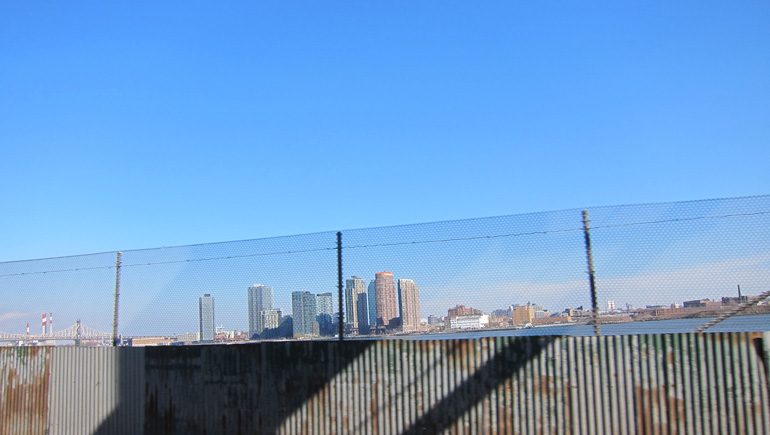Gotham Diary:
Dim
24 February 2012
Last night, we went to a preview of the new exhibition at the Metropolitan Museum of Art (hereinafter “the Museum” — but you knew that), “The Steins Collect.” There are many points at which this show might engage my interest and attention, but they all fail. I don’t like the collection, I don’t like the Steins, and I don’t much like the show. The whole affair is a sealed tomb. I mention it not to complain, and certainly not to say bad things about the art and its collectors, but only to regret that such things happen.
There are one or two or three very nice paintings. There’s a Matisse from 1904 or so (I neglected to carry a notebook) of a wrought-silver chocolate pot that flirts, frankly beautifully, with Chardin. There’s a voluptuous still life by Hans Purrmann, Matisse’s student for a while, that I took at first to be the master’s, largely because of its handling of a textile. There’s a very sweet little view of The Bay of Nice, again by Matisse, that seems to quiver and tremble as if a chick is about to peck its way out — a chick by the name of David Hockney. There is a very curious Lady With a Fan, an early Picasso that’s apparently at the National Gallery in Washington, but neither Kathleen nor I could recall seeing it before; with the hand not holding the fan, the calmly stern woman, shown in profile, makes a Buddhist gesture of peace. This comports uneasily with her downtown manner; she really seems to be saying “Come back some other time, if you must.”
Lady With a Fan is not a particularly pretty picture, but it’s an interesting one.  There are quite a lot of pretty pictures that aren’t terribly interesting, all of them drily painted landscape sketches by Matisse. There are numerous images of Gertrude Stein, all of which made me wonder, “Who was this woman?” Overall, though, “The Steins Collect” mounts the largest array of dim and dull paintings that I have ever seen. I can’t imagine actually living with them all.
***
We’re still too close to modernism — of which Gertrude Stein was certainly a significant exponent in at least two ways, as a writer and as a critic — to judge it. There is a gash of internal hostility within the movement itself, pitting authoritarian simplifiers against playful futurologists. Seen in another light, this was a battle between totalitarians and anarchists. Neither totalitarians nor anarchists take much interest in the individual differences that sustain a rich society; on the contrary, the one thing that totalitarians and anarchists agreed about was a disapproval of individual differences, which they glibly dismissed as “narcissism.”
Gertrude Stein lived an anarchist’s life — easy to do if you’ve got plenty of money, but impossible without it unless you have a taste for explosives — yet her writing anneals the hermetic with the folksy, a combination that reminds me of Joseph Stalin. I tend to feel that Gertrude Stein ought to be interesting, but isn’t. This can be cxplained, perhaps, by the fact that Edith Sitwell got to me first.
Gertrude Stein assembled her collection in a ten-year period that came to an end on the eve of the Great War. It was during this time that Picasso underwent the full round of modernist convulsions. After the war, he emerged, in an intriguing parallel with his contemporary, Igor Stravinsky, as a neo-classicist. Modern art became a thing of the past, an achievement awaiting the world’s universal appreciation. I see Gertrude Stein, in her apartment at 27, Rue de Fleurus (near the Luxembourg Gardens), as a kind of hen, sitting on her brood of masterpieces, most of which turned out not to be. I have only one question: what would color photographs of her apartment have told us? The images of the flat that we do have suggest an unhygeinic griminess that well-brought-up Americans can’t have been comfortable with, unless of course they were making a point of it. The pictures on the walls of the Museum’s Tisch Galleries tell us that, Matisse aside, color was mistrusted by these artists and their patrons.
***
“The Steins Collect” is of course not just about Gertrude. Her brothers, Leo and Michael, collected as well — it was Michael and his wife Sarah who were partial to Matisse. I can imagine studying this show with a focus on who owned what. But first you’d have to care about something, either the Steins or these paintings, but I simply don’t care about enough of them.
In the giftshop, there were copies of  Janet Malcolm’s Two Lives: Gertrude and Alice, bits of which I read in The New Yorker. I want to read the book entire (it’s not long) while the Steins show is up; maybe I’ll learn to see something new. I’ll always be happy to see Matisse’s Still Life with Chocolate Pot again, even if, painted in 1900, it falls outside the modernist overhaul. It’s a souvenir of a way of life that was about to crushed in every dimension, but also a beacon that guides us to the possibility of recreating civil life, as well as a herald of the bourgeois regularity that Gertrude Stein never forswore.

